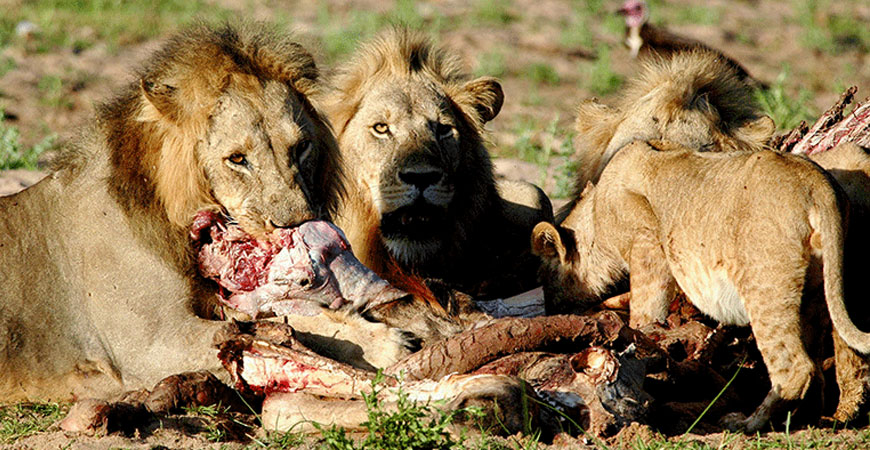
A group of UC Merced researchers modeled predation behaviors, as well as changes in those behaviors, among large carnivores, developing a new theory that will help biologists assess the health of various ecosystems.
Department of Life and Environmental Sciences Professor Justin Yeakel, Department of Physics Professor Ajay Gopinathan and their former graduate student V. P. S. Ritwika use the new theory to predict how predators forage — do they predominantly hunt, scavenge or steal from another predator?
The study results are detailed in the March issue of the Journal of Animal Ecology, published by the British Ecological Society.
The predicted behaviors are based on several sets of variables:
· The size of the predator and the relative size of the prey (in the case of stealing, the size of the competitor as well);
· The relative risks and rewards of consumption – the quality of the meal, the energy expended to get the meal, and the risk of injury in fighting for the meal;
· And how hungry or healthy the predator is — sated, starving or near death.
“We wanted to understand what induces a predator to switch between these behaviors,” said Yeakel, who studies the ecology of contemporary and ancient food webs. “First, we had to consider the differences between different ways that predators obtain their prey.”
By hunting, a predator can have the prey all to itself, but must expend the energy and take the risks associated with finding and taking down that prey, while also keeping it away from scavengers and those who would steal it.
Scavengers benefit from the effort of others by sharing the spoils of a successful hunt. That means they don't have the risk associated with the hunt, but have access to less of the kill, and potentially exposure to harmful microbiota. Stealing can be an even riskier proposition but can have a bigger payoff if the thief manages to get the whole kill while avoiding injury.
“Stealing can be a good alternative for some animals, if their body size is similar to or larger than that of the primary hunter, which increases the chance of success.” Yeakel explained. “There can be a lot of risk in stealing from another predator.”
Animals tend to use a more flexible and diverse toolkit for obtaining food as they get closer to starvation, the researchers found.
“That's not surprising, because if you're far away from starvation you have an energetic buffer and can afford to go after prey giving a good return at minimal risk,” Yeakel said. “But as you they get closer to starvation, animals tend to incorporate multiple alternative behaviors.”
But all of this is tied to the body size of the hunter, the size of the predator compared to the prey and the relative size of the predator and its potential competitors.
“The bigger you are, the greater percentage of your body mass can be carried as fat, such that the risk of starvation is lower,” Yeakel said. “But as you go after larger prey, the risk to yourself becomes greater. So scavenging is the typical approach if the prey is much larger than the predator, while hunting predominates for predators that are of similar size to their prey.”
The researchers are now able to predict these behavioral transitions based on body size. They and others can also use their model to better understand the effects of climate change as the warming climate pushes ecological communities into new, and potentially hazardous, states.
Their model was borne out by observations of such animals as lions, tigers, wild dogs, hyenas and cheetahs.
“Lions will tend to hunt prey up to about wildebeest size, and they will scavenge prey that is larger than that,” Yeakel said. “Hyenas transition at a size class closer to that of zebra.”
Scientists understand less about scavenging because it is hard to observe in the field, he said. It is not well understood how scavenging contributes to the assembly and structure of food webs or how dependent species are on scavenged biomass. Hunting is better understood because it is more actively observable.
“We think of hyenas as scavengers and lions as hunters, but they scavenge roughly similar proportions of their diet,” Yeakel said.
The framework provided by the researchers provides valuable insights into predator foraging behaviors, offering a powerful tool for future observational research.